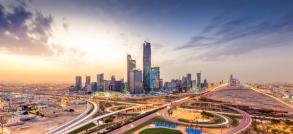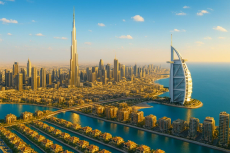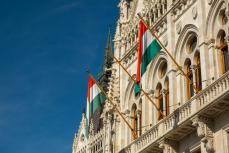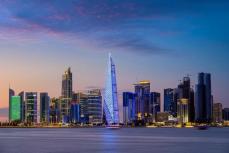Blog • Published on:September 20, 2025 | Updated on:September 20, 2025 • 16 Min
Top 10 Wealthiest Cities in America in 2025
In the United States, wealth tends to cluster in specific places. Certain cities consistently attract capital, talent, and industries that drive their economies far ahead of the rest.
These urban center become home to the highest concentrations of millionaires, the strongest real estate markets, and some of the country’s most valuable companies.
The 2025 ranking of the wealthiest cities shows both continuity and change. Traditional leaders like New York and San Francisco remain at the top, while cities such as Miami, Austin, and Houston have climbed thanks to rapid population growth, new investment, and expanding business sectors.
In this blog, we will highlight the 10 wealthiest cities in America today, drawing on measures such as household income, total private wealth, real estate values, and the number of high-net-worth residents.
How We Defined “Wealthiest” in 2025
Calling a city “wealthy” isn’t as simple as looking at average income.
A place might have high salaries but little accumulated wealth, or a concentration of billionaires while most residents struggle with affordability.
To get a fuller picture, this ranking draws on several measures:
- Total private wealth held in the city – the combined value of assets owned by residents, from real estate to equities.
- Number of HNWIs – millionaires, centi-millionaires, and billionaires who call the city home.
- Median household income – how much the typical family earns, showing whether prosperity extends beyond the ultra-rich.
- Real estate values – property prices give a strong indication of demand, investment, and long-term confidence in a city.
- Business and industry presence – the companies and sectors that sustain wealth creation, from finance and tech to energy and healthcare.
By weighing these factors together, the 2025 list reveals not just where the wealthiest people live, but where economic influence and opportunity are most heavily concentrated.
10. Austin, Texas
Austin has grown from a quirky college town into one of America’s fastest-rising economic centers.
The city’s mix of technology, venture capital, and creative industries has drawn thousands of high-earning professionals, many relocating from California and the East Coast.
- Median household income (2025): around $110,000, well above the national average
- HNW residents: steady growth in millionaires as tech founders and executives settle here
- Key industries: software, semiconductors, music and entertainment, renewable energy
- Real estate: luxury housing demand continues to surge, with downtown condos and suburban estates pushing prices higher
Austin’s appeal comes from more than just jobs. Its cultural scene, universities, and quality of life make it an attractive place for both entrepreneurs and families.
This balance of innovation and lifestyle has turned Austin into one of the country’s wealthiest and most dynamic cities.
9. Miami, Florida
Miami has become a magnet for global wealth over the past decade.
Once mainly known as a tourist hub, the city now attracts hedge funds, tech startups, and wealthy families from Latin America, Europe, and other parts of the U.S.
- Median household income (2025): about $60,000, lifted by finance and real estate sectors
- HNW residents: rapid increase in millionaires and billionaires relocating for tax advantages
- Key industries: finance, crypto, international trade, tourism, real estate
- Real estate: luxury waterfront properties often sell for tens of millions, making Miami one of the hottest luxury markets in the country
Miami’s appeal lies in its combination of lifestyle, tax policy, and global connectivity.
It has positioned itself as the “capital of capital” for Latin America, while also pulling investment from New York and California transplants.
8. Boston, Massachusetts
Boston’s wealth is built on education, healthcare, and technology.
With Harvard, MIT, and a cluster of world-class research hospitals, the city continues to attract top talent and innovation funding.
- Median household income (2025): around $95,000, one of the highest in the U.S
- HNW residents: strong base of affluent professionals, biotech executives, and investors
- Key industries: biotechnology, finance, higher education, healthcare
- Real estate: high demand for historic properties and new developments keeps Boston among the priciest housing markets
Boston’s strength comes from its knowledge economy.
The mix of universities, medical centers, and venture capital makes it a hub for cutting-edge industries, and that translates into sustained wealth creation.
7. Seattle, Washington
Seattle remains one of America’s wealth capitals, thanks to its global tech giants and entrepreneurial ecosystem.
Amazon and Microsoft anchor the city, while a growing number of startups and clean-energy firms add to its economic base.
- Median household income (2025): approximately $120,000
- HNW residents: thousands of millionaires, plus several billionaires tied to tech
- Key industries: technology, aerospace, clean energy, logistics
- Real estate: high property values, especially in waterfront neighbourhoods and suburban enclaves
Seattle shows how wealth can be tied to innovation on a global scale.
Despite high housing costs and traffic challenges, its concentration of talent and corporate power keeps it among the richest cities in America.
6. Dallas, Texas
Dallas has built a reputation as one of the most business-friendly cities in the U.S., and its wealth reflects that.
A diverse economy, spanning energy, finance, and tech, has helped Dallas attract both companies and high-earning professionals.
- Median household income (2025): around $70,000
- HNW residents: rising numbers of millionaires and billionaires, many linked to oil, real estate, and private equity
- Key industries: energy, finance, technology, telecom
- Real estate: luxury estates in Highland Park and modern developments in Uptown command multi-million-dollar price tags
Dallas combines Southern affordability with global opportunity, making it a long-term magnet for wealth and investment.
5. Houston, Texas
Houston is the energy capital of the United States, and oil and gas continue to underpin its wealth.
Yet the city has also expanded into healthcare, aerospace, and advanced manufacturing, broadening its economic strength.
- Median household income (2025): about $80,000
- HNW residents: strong base of energy magnates, healthcare investors, and entrepreneurs
- Key industries: energy, healthcare, aerospace, trade
- Real estate: luxury properties spread across River Oaks make Houston a competitive high-end housing market
Houston’s wealth comes from scale, its massive energy sector, diverse population, and position as a global trade hub. It consistently ranks among America’s wealthiest cities.
4. Chicago, Illinois
Chicago remains the economic anchor of the Midwest.
Its wealth is tied to finance, logistics, and corporate headquarters that serve not only the U.S. but also global markets.
- Median household income (2025): around $90,000
- HNW residents: a significant number of millionaires and billionaires, often connected to trading, finance, and manufacturing
- Key industries: finance, logistics, manufacturing, real estate
- Real estate: Chicago’s luxury condo market and lakefront properties remain some of the most expensive in the Midwest
Chicago continues to combine old-line wealth with new investment, keeping it firmly within the top five richest American cities.
3. Los Angeles, California
Los Angeles has long been a center of wealth, and in 2025 it remains one of America’s richest cities.
Its economy blends entertainment, real estate, international trade, and an increasingly important tech sector.
- Median household income (2025): about $92,000
- HNW residents: Hollywood stars, media moguls, tech entrepreneurs, and global investors keep L.A.’s millionaire and billionaire population among the highest in the country
- Key industries: entertainment, real estate, trade, tech, fashion
- Real estate: Beverly Hills, Bel Air, and Malibu remain symbols of extreme wealth, with homes regularly selling for over $50 million
Los Angeles represents both traditional wealth through media and real estate and new money through tech and startups. It continues to define luxury culture in America.
2. San Francisco Bay Area, California
The Bay Area is synonymous with technology wealth. Home to Silicon Valley, it concentrates more tech billionaires and centi-millionaires than any other region outside New York.
- Median household income (2025): approximately $150,000, one of the highest in the country
- HNW residents: thousands of millionaires created through tech IPOs and private equity; the region houses some of the wealthiest individuals in the world
- Key industries: technology, venture capital, biotech, clean energy
- Real estate: property values remain sky-high in San Francisco, Palo Alto, and Atherton, where median home prices often exceed $4 million
The Bay Area’s wealth is deeply tied to innovation. Despite cost-of-living pressures, it remains a global hub for ideas, capital, and entrepreneurship.
1. New York City, New York
New York remains unmatched as the wealthiest city in America in 2025. As the country’s financial capital, it houses more millionaires and billionaires than any other U.S. city.
- Median household income (2025): about $115,000
- HNW residents: over 300,000 millionaires, with Wall Street, real estate, media, and tech leaders forming the backbone of its ultra-wealthy population
- Key industries: finance, real estate, media, technology, law
- Real estate: Manhattan’s luxury property market continues to set global benchmarks, with penthouses exceeding $100 million
New York’s mix of finance, culture, and global influence keeps it firmly at the top. No other American city matches its scale of wealth or its role as a global financial center.
Factors Driving Wealth Concentration in Top U.S. Cities
Several forces explain why certain cities dominate America’s wealth landscape in 2025. While each city has its unique story, a few common patterns stand out:
1. Industry Clusters
Cities with specialized industries, finance in New York, technology in the Bay Area, entertainment in Los Angeles, energy in Houston, develop self-sustaining ecosystems. Companies attract talent, talent attracts capital, and capital fuels further growth.
2. Talent and Education
Access to top universities and research institutions keeps places like Boston and San Francisco on the cutting edge. Highly educated workforces support innovation, high salaries, and a steady pipeline of new businesses.
3. Global Connectivity
Cities like Miami and New York thrive as international gateways. They attract foreign direct investment, global headquarters, and wealthy individuals seeking both opportunity and lifestyle advantages.
4. Real Estate as a Wealth Magnet
Luxury property markets are not just a result of wealth but also a driver. High-value real estate attracts investment capital, raises tax bases, and creates demand for services that feed into local economies.
5. Policy and Tax Environment
Favourable tax laws and business regulations make cities such as Austin, Dallas, and Miami particularly appealing. Their growth demonstrates how policy decisions shape where wealth concentrates.
6. Lifestyle and Infrastructure
Soft factors matter. Quality of life, cultural offerings, transport, and climate play a role in why wealthy individuals choose one city over another, reinforcing long-term prosperity.
Millionaire Population Trends in Major U.S. Wealthy Metropolitan Areas
Growth in Millionaires Nationwide
- In 2024, the U.S. added over 379,000 new millionaires, averaging more than 1,000 new millionaires per day.
- 4 out of every 10 millionaires in 2024 were based in the U.S.
Key Metro Areas and Updated Counts
Here are updated figures for several U.S. metropolitan/city areas:
- New York City: 384,500 millionaires
- San Francisco Bay Area: 342,400 millionaires using the same measure
- Houston, Texas: 81,800 millionaires in 2025, down from 90,900 in 2024. The decline is largely attributed to slowdowns in energy sector performance and some out-migration of wealthy individuals to states like Florida
- Dallas, Texas: 72,400 millionaires
- Austin, Texas: 32,000 millionaires
Trends in Behavioral and Migration Patterns
- Millionaire Renters: Houston leads metro areas in growth of millionaire renter households. From 2019 to 2023, the number of Houston households earning over $1 million and renting rose from 7 to 179, the largest such increase among U.S. metros. Nationally, millionaire renter households have more than tripled in that period.
- Migration / Outflows: Houston saw some net outflow of HNWIs in 2024-2025, largely moving to Florida (e.g. Miami area). The energy sector slowdown is cited as a factor.
- Decade-Long Growth: Between 2014 and 2024, Houston’s millionaire population has increased by about 75%. Dallas has grown 85%. Austin 90%. Miami 94%.
Luxury Real Estate Markets in America’s Wealthiest Cities
Luxury real estate continues to be a defining factor in how wealth is visible and how it grows in America’s richest metro areas.
Even with rising interest rates and economic uncertainty, the market for ultra-high-end homes is thriving, with new trends shaping where and how the wealthy buy.
Key Trends in Luxury Real Estate
- Post-pandemic demand remains strong: Homes that offer amenities, space, views, and privacy are highly sought after. Buyers are prioritizing quality over just location
- Sales in the $10M+ segment are increasing: Places like Manhattan, Los Angeles County, and Miami-Dade are seeing sharp growth in the number of sales above that threshold
- Luxury housing outperforms broader markets: Single-family luxury homes are seeing price appreciation at roughly double the rate of non-luxury segments in many of the top cities
- Affordability pressures push luxury demand into secondary or suburban markets: As prime central zones become very expensive, buyers are willing to look further out for comparable luxury at lower cost.
- Lifestyle, wellness, branded residences: Many luxury buyers are seeking wellness-oriented homes, smart tech, green building, and branded residences
New York City
New York remains the benchmark for luxury property. Manhattan’s “super-prime” condos and penthouses often sell above $100 million, with per-square-foot prices in top towers exceeding $5,000.
Demand comes not only from U.S. buyers but also international investors who see Manhattan real estate as a global safe haven. Neighborhoods like Tribeca, Central Park South, and Hudson Yards dominate high-end sales.
Miami
Miami’s luxury market has been transformed by the influx of wealthy migrants from high-tax states and international buyers.
Ocean-front condos and waterfront estates in Miami Beach and Coral Gables frequently list for $10–50 million. In 2025, branded residences linked to luxury hotels are especially popular, combining lifestyle services with long-term property value.
Los Angeles
Los Angeles offers some of the most extravagant estates in the country.
Beverly Hills, Bel-Air, and Malibu feature properties that often exceed $50 million, complete with sprawling land, privacy, and amenities such as private cinemas, wine cellars, and wellness facilities.
The Hollywood Hills continue to attract tech and entertainment executives seeking both status and views.
San Francisco Bay Area
Silicon Valley wealth has kept Bay Area luxury prices among the nation’s highest. Atherton, Palo Alto, and San Francisco’s Pacific Heights see regular sales between $10–30 million.
Median home prices in Atherton remain above $7 million, making it one of the most expensive zip codes in the country. The demand comes mainly from tech executives, venture capitalists, and entrepreneurs.
Houston and Dallas
Texas’ luxury markets have grown rapidly as high-net-worth individuals relocate from California and New York. In Houston, River Oaks is a prime address, with estates selling in the $5–15 million range.
Dallas offers luxury in Highland Park and Preston Hollow, where mansions list between $5–25 million. Lower state taxes and a strong local economy make these markets especially attractive to wealthy buyers.
Emerging Wealth Hubs
- Palm Beach: Ultra-wealthy buyers compete for limited beachfront estates, pushing many sales above $30 million
- Aspen: Second homes in the Rocky Mountains continue to attract billionaires, with properties often priced at $10–50 million, depending on acreage and views
- Austin: Though smaller in scale, Austin’s luxury market has heated up, with downtown condos reaching $3–5 million and hill country estates climbing into the $10–15 million range
Investment Opportunities in America’s Richest Cities
Business Development
- Thriving Industries: Boston and San Francisco are leaders in biotech, artificial intelligence, and other high-tech fields. Their strong universities and research centers feed talent directly into startups, many of which are backed by deep pools of venture capital.
- Corporate Relocations: Dallas, Houston, and Miami have become popular destinations for corporate headquarters. Lower taxes, fewer regulations, and business incentives make these cities appealing for companies leaving higher-cost regions.
Real Estate
- Residential Investments: Wealthy buyers are drawn to neighbourhoods with long-term value and prestige. Beacon Hill in Boston, Queen Anne in Seattle, and Beverly Hills in Los Angeles remain reliable areas where property values appreciate faster than average.
- Commercial Properties: New York City and Chicago continue to attract institutional investors. Office towers, mixed-use projects, and luxury retail spaces in prime locations remain strong assets, especially in areas with high foot traffic and global connectivity.
- Emerging Markets: Secondary cities like Nashville and Phoenix are gaining investor attention. They offer lower entry prices compared to coastal hubs yet show strong growth in both population and business activity.
Startup Ecosystems
- Venture Capital Concentration: Nearly half of all U.S. venture capital flows into San Francisco and New York. Startups in AI, fintech, and green tech dominate funding rounds, reinforcing these cities as the nation’s innovation centers.
- Rising Hubs: Austin and Miami are fast-growing alternatives. Austin is known for producing unicorn companies in tech, while Miami attracts fintech and crypto startups, supported by a tax-friendly environment and an influx of global investors.
How to Access America’s Wealthy Cities Through Investment
- Path to Residency: The EB-5 Immigrant Investor Program allows foreign investors to obtain U.S. residency by investing a minimum of $800,000 in qualified projects that create jobs
- Preferred Cities: Metropolitan areas such as New York City and Miami are especially popular for EB-5 projects, thanks to their strong infrastructure, economic activity, and designated investment zones
Business Immigration
- Entrepreneurial Opportunities: The L-1 visa enables international companies to expand operations into the U.S., making it easier for entrepreneurs to establish themselves in cities with thriving industries
- Franchise Investments: Purchasing into a U.S. franchise can provide a more secure and structured route, contributing directly to the local economy while supporting an investor’s residency goals
Investment Requirements
To qualify for residency through programs like the EB-5 Visa, investors must meet several criteria:
- Minimum Capital: At least $800,000 invested into approved commercial enterprises, typically within Targeted Employment Areas (TEAs) such as rural or high-unemployment regions
- Job Creation: The investment must generate or preserve at least 10 full-time jobs for U.S. workers within two years
- Regional Centers: Many investors work with designated Regional Centers, which pool capital into larger projects including infrastructure, real estate, and business development
- Compliance: Investors must prove the lawful source of funds and maintain documentation showing compliance with program rules
Expertise in Accessing America’s Wealthiest Cities
Savory & Partners offers tailored support for investors seeking U.S. residency. Our team manages the full application process, ensures regulatory compliance, and assists with post-residency needs.
FAQs on America’s Wealthiest Cities
1. Which U.S. cities have seen the fastest millionaire growth in recent years?
Cities like Miami, Austin, and Dallas have recorded some of the highest millionaire growth rates over the past decade, largely due to migration from high-tax states and booming industries like tech and energy.
2. Is it still worth investing in traditional hubs like New York and San Francisco?
Yes. While growth rates may be slower than in emerging metros, New York and San Francisco remain dominant wealth centers, with unmatched access to finance, venture capital, and global networks. They continue to attract institutional investors and high-net-worth individuals.
3. What types of real estate perform best in wealthy U.S. cities?
- Luxury residential: prime neighbourhoods (e.g., Beverly Hills, Manhattan, Miami Beach).
- Mixed-use commercial projects: especially in New York and Chicago.
- Second-home markets: places like Palm Beach and Aspen are popular with ultra-high-net-worth buyers.
4. How can international investors gain residency in the U.S. through investment
The most popular route is the EB-5 Visa Program, requiring at least $800,000 in qualified projects that create jobs.
Alternatives include the L-1 Visa for business expansion and the E-2 Visa for nationals of treaty countries investing in U.S. enterprises.
References
Reuters. (2025, June 18). U.S. added over 1,000 new millionaires a day last year, UBS report says. Reuters. Referred from: https://www.reuters.com/business/finance/us-added-over-1000-new-millionaires-day-last-year-ubs-report-says-2025-06-18/
The Washington Post. (2025, July 26). San Francisco’s AI boom is reshaping tech, wealth, and housing demand. The Washington Post. Referred from: https://www.washingtonpost.com/business/2025/07/26/ai-boom-san-francisco-tech-workers-housing/
Houston Chronicle. (2025, May 8). Houston’s millionaire population drops as wealthy shift to Florida. Houston Chronicle. Referred from: https://www.houstonchronicle.com/business/article/houston-millionaires-2025-20313175.php
Realtor.com. (2025, July 15). Luxury housing market ranking: The most expensive ZIP codes in America. Realtor.com. Referred from: https://www.realtor.com/research/july-2025-wsj-rdc-luxury-housing-market-ranking/
UBS. (2025). Global Wealth Report 2025. UBS Group AG. Referred from: https://www.ubs.com/global/en/wealthmanagement/insights/global-wealth-report.html
Written By

João Silva
João Silva is a seasoned consultant in the global mobility industry with over 12 years of experience. Specializing in European residency and citizenship by investment programs, João has assisted hundreds of high-net-worth clients in securing their second citizenship through strategic investments in real estate and government bonds.
Related Articles









Recently Published









Book a free consultation


